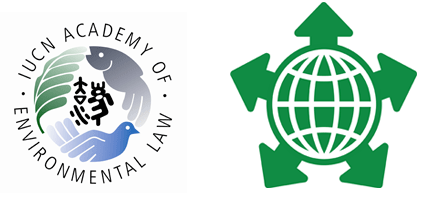Event Title
Variations on a Theme: Ways to Tackle Diffuse Water Pollution on the Basis of Lessons Learned
Location
Ceremonial Mootcourt Room
Start Date
2-7-2012 3:00 PM
End Date
2-7-2012 4:40 PM
Description
The Baltic Sea has the dubious honour of being one of the most polluted seas in the world, partly because of industrial agriculture and eutrophication it causes via nitrogen and phosphorus loads. The ways to tackle the problem have been both manifold and unefficient: as a member state of the EU Finland has tried to meet the challenge with a variety of legal strategies. Aim of this presentation is to glance at those and ponder whether there would be more effective means to an end.[1]
The first strategic step has been addressing on one of the main causes, nitrogen. At the EU level, the Nitrates Directive (91/676/EEC) aims to control the usage of fertilizers – the implementing decree is one of the main tools used to curb the nutrient loads in Finland. This strategy has turned out to be rather slow with results, partly because the soil retains nutrients.
The second strategic move has been using the carrot. Targeted financial support has had a leading position in EU-wide Common Agricultural Policy. In spite of that the effectiveness of the incentive payments has caused serious doubts – according to a recent study the nitrogen runoff has actually increased[2]. Thus both these old strategies can be said to be if not useless, at least unefficient.
A novelty in the scene is the tactics adopted in the Water Framework Directive or WFD[3]. In the WFD the focus is shifted to the condition of waterbodies. The aim is to manage the actions at river basins in such a way that the waters fill at least the definition of ‘good quality’. The focus is in water quality management so the obligations are set for the governments to reach. For achieving the aim addressing diffuse water pollution is crucial.[4]
[1] The presentation is based on the authors ongoing doctoral research.
[2] Jussi Lankoski & Markku Ollikainen, Counterfactual approach for assessing agri-environmental policy: Theory with an application to Finnish water protection policy (University of Helsinki, Department of Economics and Management, Discussion Papers n:o 56 Helsinki 2011) 5
[3] Directive 2000/60/EC Of The European Parliament And Of The Council Establishing A Framework For The Community Action In The Field Of Water Policy.
[4] E.g. the UK has been suggested to fail to meet the objectives of WFD due to diffuse water pollution. See William Howarth, ’Diffuse Water Pollution and Diffuse Environmental Laws’ (2011) JEL 23:1 129, 133
Presentation
Included in
Variations on a Theme: Ways to Tackle Diffuse Water Pollution on the Basis of Lessons Learned
Ceremonial Mootcourt Room
The Baltic Sea has the dubious honour of being one of the most polluted seas in the world, partly because of industrial agriculture and eutrophication it causes via nitrogen and phosphorus loads. The ways to tackle the problem have been both manifold and unefficient: as a member state of the EU Finland has tried to meet the challenge with a variety of legal strategies. Aim of this presentation is to glance at those and ponder whether there would be more effective means to an end.[1]
The first strategic step has been addressing on one of the main causes, nitrogen. At the EU level, the Nitrates Directive (91/676/EEC) aims to control the usage of fertilizers – the implementing decree is one of the main tools used to curb the nutrient loads in Finland. This strategy has turned out to be rather slow with results, partly because the soil retains nutrients.
The second strategic move has been using the carrot. Targeted financial support has had a leading position in EU-wide Common Agricultural Policy. In spite of that the effectiveness of the incentive payments has caused serious doubts – according to a recent study the nitrogen runoff has actually increased[2]. Thus both these old strategies can be said to be if not useless, at least unefficient.
A novelty in the scene is the tactics adopted in the Water Framework Directive or WFD[3]. In the WFD the focus is shifted to the condition of waterbodies. The aim is to manage the actions at river basins in such a way that the waters fill at least the definition of ‘good quality’. The focus is in water quality management so the obligations are set for the governments to reach. For achieving the aim addressing diffuse water pollution is crucial.[4]
[1] The presentation is based on the authors ongoing doctoral research.
[2] Jussi Lankoski & Markku Ollikainen, Counterfactual approach for assessing agri-environmental policy: Theory with an application to Finnish water protection policy (University of Helsinki, Department of Economics and Management, Discussion Papers n:o 56 Helsinki 2011) 5
[3] Directive 2000/60/EC Of The European Parliament And Of The Council Establishing A Framework For The Community Action In The Field Of Water Policy.
[4] E.g. the UK has been suggested to fail to meet the objectives of WFD due to diffuse water pollution. See William Howarth, ’Diffuse Water Pollution and Diffuse Environmental Laws’ (2011) JEL 23:1 129, 133

